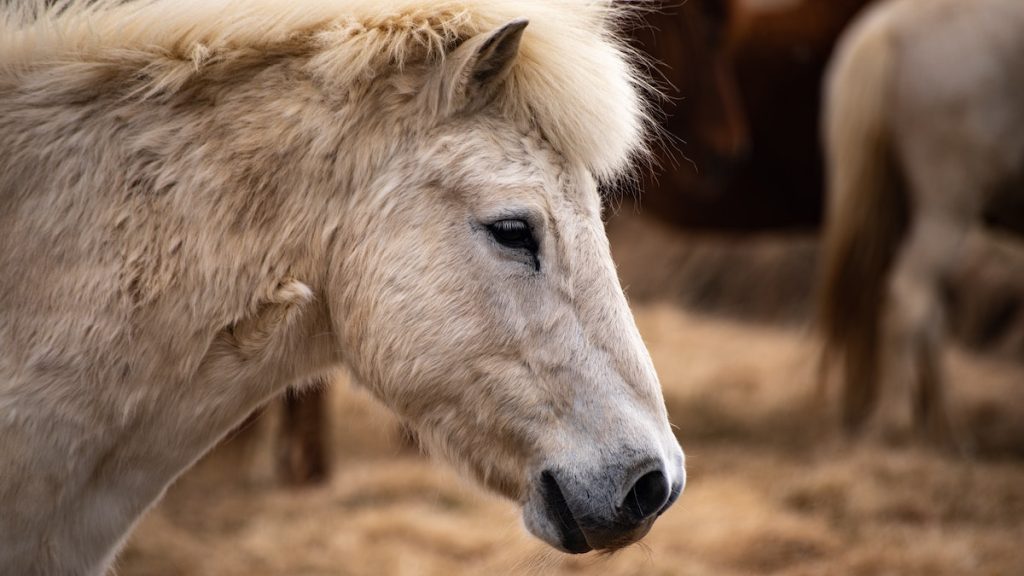Protect your horse from this painful condition.
Equine laminitis, also known as founder, can cause severe lameness in your horse’s hooves. And while this crippling disease affects all types of horses, there are some traits that increase one’s susceptibility to this condition. The good news is laminitis is preventable, but it requires lifestyle adjustments. Make sure you know the warnings signs and how you can protect your horse.
Every day, tons of horses are diagnosed with cases of laminitis. It is particularly common in the spring and fall. The most frequent cause of this painful condition is overfeeding- both through lush pasture and grain overload. Many owners think they are being kind when in reality they are risking their horse’s health.
What causes laminitis?
First, you should know the laminae is the insensitive and sensitive tissue located between the hoof wall and coffin bone. This interlocking structure is able to keep the bone in place. Laminitis is caused when the laminae does not receive blood flow. The result is inflammation, which weakens the structure and bond of the hoof wall and coffin bone.
In severe cases, the coffin bone is pushed towards the ground due to the horse’s weight. Because of the deep digital flexor tendon, the bone is then at risk for rotating. Your horse’s coffin bone may even push through the sole of the hoof.
The main cause of laminitis is obesity. Horses that are chronically overweight are putting extra strain on their body. Other causes include abrupt diet changes, large amounts of lush grass, severe colic, excessive weight on one leg and black walnut shavings.
What are some of the risk factors?
As previously mentioned, some horses have an increased risk to develop laminitis. There are a few types and breeds that are especially susceptible- drafts, ponies, miniatures and donkeys. Once your horse is diagnosed with a case of laminitis, they’re likely to have a reoccurrence in the future.
Other risk factors include being overweight, those with insulin resistance, and older horses with Cushing’s disease. If your horse accidently consumes large amounts of grain, they may also experience this condition. Make sure to contact your vet immediately!
What are some signs?
One of the most common signs of laminitis is lameness. It can affect one or all of your horse’s hooves. You may notice lameness when your horse turns in a circle or a reluctance to walk. Furthermore, heat and an increased pulse in the foot are other giveaways.
Horses with chronic laminitis will often have a few telltale signs. These include rings in the hoof wall that widen from the toe to heel, widened white lines, dished hooves and bruised soles. Your horse may also develop a cresty neck.
How can you treat this condition?
Usually, the sooner your horse begins treatment, the better their outcome is. The first few steps involve lifestyle changes, including dietary restrictions, administrating mineral oil or fluids and housing the horse on soft ground. Your vet will also need to identify the reason your horse foundered to begin with.
In some cases, certain drugs will be used to fight infections. Additionally, any abscesses will need to be cared for. And lastly, your farrier may help with corrective trimming or therapeutic shoes. New therapies continue to make treating laminitis easier.
It is hard to say how laminitis will affect your horse once they get it. Some horses recover quickly and live normal lives, while others suffer from irreversible damage. Either way, extra care is necessary for the remainder of their life. It’s best if you prevent this awful disease from ever getting your horse!
**
Emily Fought discovered her passion for horses early on in life. When she isn’t writing about them, you can find her in the barn riding. Although Emily’s background is in dressage, she enjoys cross-training and is an avid trail rider. She resides in Northwestern Pennsylvania with her husband and small dog. Together, they own and operate Humblewood Farm.




